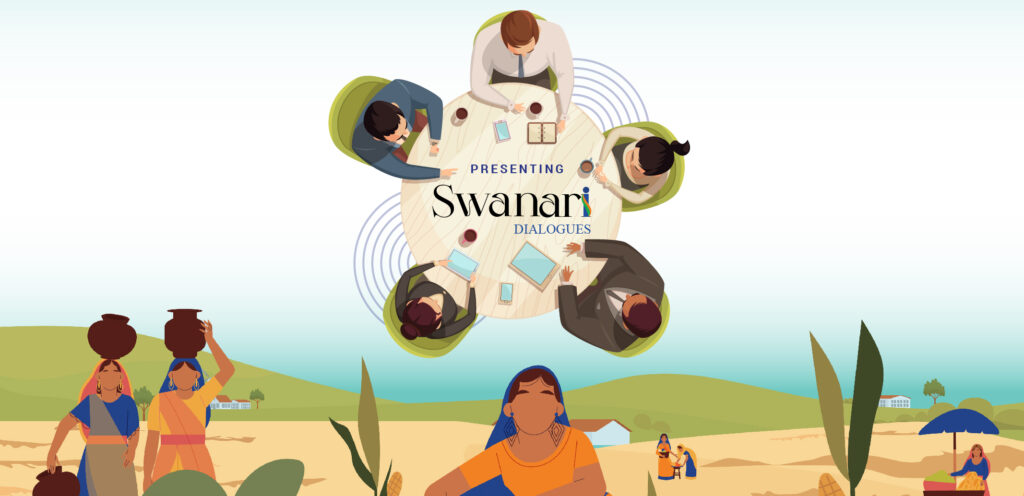
In the ever-evolving landscape of Indian entrepreneurship, women are achieving remarkable strides, contributing to both economic growth and societal transformation. However, securing formal credit remains a recurring challenge. In a recent Swanari dialogue session conducted by the Reserve Bank Innovation Hub (RBIH), we engaged with 15 inspiring women entrepreneurs who shared their candid experiences – challenges and insights during the loan disbursement journey. The discussion unveiled an array of challenges and potential solutions that deserve the spotlight.
The most common challenges identified by women-entrepreneurs
1. Long-drawn Processes: Most women identified the loan application process for MSME loans as complex, time-consuming, and exhausting. Women expressed that the stringent documentation requirements, multiple visits to banks, and the need to answer the same questions repeatedly often lead to frustration and loss of interest. They would rather utilise this time more productively to acquire more customers.
2. Lack of access to resources: Women agreed that cultural and societal factors restrict their access to assets and property, putting them at a disadvantage compared to their male counterparts. This also limits their capacity to offer collateral while availing loans. Women running service-based businesses face different challenges when it comes to accessing bank loans due to their limited possession of tangible assets that can be utilised as collateral.
3. Rigid Banking Requirements: Women are asked by banks to provide collaterals and deposits, despite good transaction and credit histories. For instance, women are often asked by banks to provide a fixed deposit of an equal amount to access an overdraft facility. Additionally, most women found it to be exceedingly difficult to access a bank loan without an intermediary agent with strong relationships and extensive connections with banks.
4. Unavailability of a centralised marketplace to upload documents: Women apply to multiple banks with the hope of getting approval from at least one. However, this means they have to gather all the required documents afresh, complete rigorous application forms, and furnish the same business plan repeatedly. This redundant process significantly amplifies their workload.
5. Inadequate financial training: Inadequate financial training from a young age limits women’s financial confidence and their capacity to produce a strong business plan or revenue model. This adversely affects their financial communication with a banker as well as their entire credit journey.
6. Lack of awareness about policies: There are a few debt products and government schemes that are available exclusively for women entrepreneurs in India; however, many women are either unaware or do not know how to access these. Furthermore, women also find it difficult to access MSME grants due to stringent paperwork and legal requirements.
7. Lack of Implementation of Policies: Insufficient awareness among bank staff regarding MSME lending, along with a lack of familiarity with schemes and policies designed for women, combined with stringent regulations, hinders the effective delivery of policy benefits to women entrepreneurs.
8. Absence of Capital Support during Ideation to Productisation Stage: The transition from ideation to productisation can be challenging, leading women to deplete their capital resources. Unfortunately, there are limited products in the market designed to provide financial support to women during this crucial phase of their business development.
9. Gendered Barriers: Banks lack confidence in women entrepreneurs’ ability to repay loans on time. Women applicants face many discriminatory practices such as requiring the signature of a male member of the family on loan applications, longer Turnaround Time (TAT), repeated visits to banks, etc.
10. Other Barriers: First-generation female entrepreneurs face difficulties in navigating the process of setting up a business due to a lack of knowledge and funding opportunities. Additionally, language barriers and lack of rapport with bank managers hinder their progress.
Potential Solutions Suggested by Women Entrepreneurs
Centralised marketplace to upload all the documents: Standardised credit processes across banks and a centralised marketplace to upload all the documents would minimise redundant efforts and make accessing credit much simpler.
Organisational Support and Professional Assistance: The National Small Industries Corporation (NSIC) and other similar entities could provide guidance and support to women entrepreneurs. Additionally, women getting professional assistance in designing their business models and preparing business plans could improve their chances of being considered as a strong business case by banks.
IP-Backed Financing: Exploring innovative financing options, such as Intellectual Property (IP) backed financing, could provide alternative avenues for securing funding.
Information Desk: Setting up an information desk that provides prompt and accurate responses to funding-related queries could empower women entrepreneurs with the necessary information.
An RBIH perspective
As RBIH, we can actively participate in innovating and promoting end-to-end digital STP lending solutions which will benefit women entrepreneurs by enhancing overall efficiency. Our initiatives such as the Swanari Techsprint fosters gender intentional design and through similar initiatives, we can identify relevant partners and work with them to build credit products that cater particularly to women, addressing their unique needs. This will increasingly help the women entrepreneurs address their credit needs.
In conclusion, the insights from the dialogue session underscore the multifaceted nature of the challenge and the potential for meaningful change. By embracing digital transformation, fostering tailored support, and crafting gender-inclusive financial instruments, we can set the stage to empower women with access and opportunities. This, complemented by collaborative efforts – that bring together financial institutions, policymakers, and support organisations – could pave the way for a prosperous entrepreneurial ecosystem, and make India the global model for an inclusive economy.
